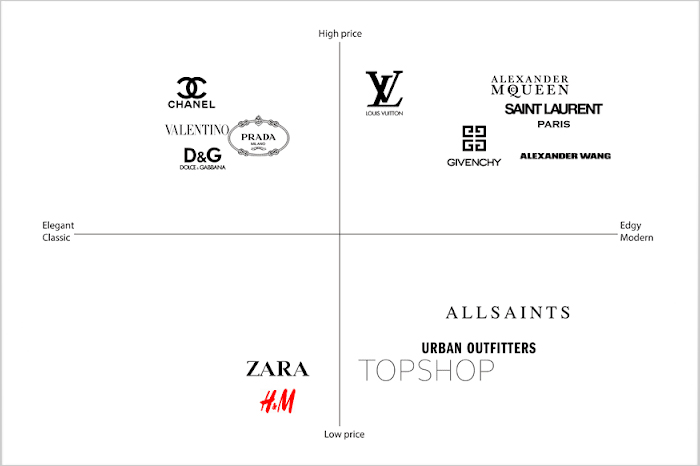

There’s plenty of insight in the phrase, “Out of mind, out of business.”
This is why successful businesses invest in deliberate brand positioning.
But while “brand positioning” is a buzzword in boardrooms across the globe, few startups have a firm grasp of exactly what it means. The term is usually confused for various other marketing activities.
To put yourself ahead of the competition, you have to know what brand positioning is. From this perspective, you will have a keener understanding of why positioning matters and how to do it effectively.
With that in mind, let’s delve deeper into the topic.
Simply put, “brand positioning” is the place a brand occupies in the minds of its customers.
The term was popularised by Al Ries and Jack Trout in their bestselling book, Positioning: The Battle for Your Mind.
The authors had this to say:
“Positioning is not what you do to a product. Positioning is what you do to the mind of the prospect. That is, you position the product in the mind of the prospect.”
Ries & Trout, 2001
This means that whether you cultivate a brand position or not, you will have one — people are always forming opinions on everything they interact with, consciously or otherwise.
If you’re not making a deliberate effort to create a certain impression, you’re likely to end up with detrimental positioning.
To have effective brand positioning, you have to put conscious effort into it. This takes different strategies, including pricing, packaging, promotions, distribution, and competition.
The main objective is to create a certain impression in the customer's mind — they should associate something specific and desirable with your brand.
Think about how Nike has positioned itself as a brand that cares about athletic performance and innovation.
Everything about their brand strategy — from the name (after the Greek Goddess of Victory), to the swoosh logo, to the tagline (“Just Do It”) — emphasises their desired positioning.
In advertisements, Nike’s models aren’t smiling as they take a leisurely jog. They are athletes with their game faces on.

Sadly, many small businesses overlook the importance of having a brand positioning strategy. Without understanding what it is, they don’t realise the key role it plays in their long term success.
If you’re still wondering how brand positioning will help your business, read on.
Do you want to break through the marketplace noise? Investing in a strong brand positioning is one of the best ways to do so.
With hundreds and thousands of similar products in the market, positioning helps you define your brand’s uniqueness. And, additionally, with a defined position you will no longer be throwing darts at random targets with your marketing efforts.
Instead, you will be speaking directly to your target customer.
How will you make effective marketing decisions without clear brand positioning?
After defining your brand position, you will have a better focus on your brand strategy.
Brand positioning helps you identify your strengths and weaknesses. From this knowledge, you can find your unique selling point and position your brand accordingly.
Furthermore, you will be able to develop a clear set of creative guidelines to follow. This allows you to create on-brand campaigns that resonate with your target audience.
Brand positioning helps you clarify the specific value you provide to your customer — including how you satisfy the customers' needs, especially compared to what competitors are offering.
Without brand positioning, your value remains ambiguous, and no one values or buys ambiguity.
Even when you believe that your customer understands your unique value proposition, you will still need to justify your prices.
Positioning enables you to identify your price point in comparison to the competition.
You will be able to answer these questions:
A strong brand position can make a significant difference in generating and converting leads.
It helps customers connect with your brand on an emotional level. This makes convincing them to buy easier.
For instance, it doesn’t take much convincing to make an athlete or a fitness enthusiast purchase Nike products — their consistent brand positioning has already done the heavy lifting.
When positioning your brand in the market, there are various factors to consider and steps to take.
Creating a brand positioning strategy involves analysing different aspects of your brand. This helps you figure out:
The following steps will help you create a unique and effective brand positioning:
Do you know your current brand position? Understanding how your product or service is viewed by your target audience will help guide you with the following steps.
Start by surveying your core customer base.
The information gathered from your customers will give you insight on how to improve your brand positioning.
Think about your company mission, values, and value proposition — how do they match up to how customers view you?
After taking a good look inwards, it’s time to look outwards. To position your brand, you need to understand how you fare against the competition.
Create a list of your competitors and conduct an in-depth analysis. What are your similarities? Is there something unique you offer that they don’t?
There are various methods you can use to get insight into the competition, which include:
Extra Tip: To keep your competitor analysis simple, start with the top three or four direct competitors.

A positioning map helps define the place a brand occupies in the market.
Start by listing your brand’s attributes, as well as those of competing brands. Next, list the various price points and the type of customers they target.
Finally, draw a perceptual map (like the one in the image above). Place brands in the position you’ve determined through your analysis.
This map will give you a visual insight into your competitors and industry. From this point, you will be able to identify gaps in the market that will help you position your brand.
Why would someone choose your products or services over similar ones in the market?
With the information gathered in the previous steps, list your brand’s strengths. In your competitor analysis, you probably identified their weaknesses — you can capitalise on some of these.
Don’t list traits that you wish you had — you have to be certain that you can deliver on your “reasons to buy.”
Your brand’s strong points are what makes it unique. This will form the foundation of your brand positioning statement.
Now it’s time to craft your positioning statement.
Simply put, a brand positioning statement is a summary of:
With this in mind, you craft a simple but compelling positioning statement. Make sure to keep it brief — one or two sentences. This will help you stay on point with all your marketing efforts.
Take a look at Nike’s positioning statement:
“For athletes in need of high-quality, fashionable athletic wear, Nike provides customers with top-performing sports apparel and shoes made of the highest quality materials. Its products are the most advanced in the athletic apparel industry because of Nike's commitment to innovation and investment in the latest technologies.”
Nike’s statement is a great example of the elements you should include in your own. These elements include target market, customer pains, brand promise, and mission.
You will probably tweak the positioning statement several times before it feels right. Wait until you have the final version to share it with the public.
You have a proper brand positioning strategy. Now, it will inform and transform the way you do business.
Your positioning strategy should serve as a compass for all your business activities.
Make sure your adverts and marketing reflect your position. During the sales process, reinforce your brand's differentiating qualities.
Every member of your team should understand your positioning strategy. This way, they can embody it to the target customer.
Behind the failure of many businesses is the lack of an effective positioning strategy. It pays to hire a professional to assist you in doing it right from the beginning.
You don’t need to look any further.
Red Kite Design is skilled in helping brands position themselves to strengthen their market share. We create brand identities that are strategically designed to convey a unique message to your target audience.
We take the time to understand your business and its ideal customer, ensuring effective brand positioning.
Here is what our clients have to say:

Unruly Apparel owes its achievements to Chris Harris and his artistic vision and ability
As a start-up sports fashion business of which the success relied on the impact of its brand, Unruly Apparel owes its achievements to Chris Harris and his artistic vision and ability. I can’t recommend working with Chris enough. Prepare to be challenged, inspired and ultimately very satisfied with any project you choose to task him with. Unruly Apparel simply isn’t what it is without Chris and for that I can’t thank him enough!
Jamie - Unruly Apparel

You, too, can be one of our success stories.
Request a free quote and get started right away.

Article by:
Chris brings over a decade of industry experience to Red Kite working at design agencies in both the UK and Australia. Over the years he has accumulated a wealth of graphic design, strategic identity design and marketing experience. Chris is a hugely passionate identity designer endeavouring to offer the highest quality branding and logo design Brisbane and Australia wide. Chat to Chris about your branding.
We would love to hear more about your design project and how we could help bring your vision to life. Simply hit the button below to get started with a free quotation.
GET A FREE QUOTE